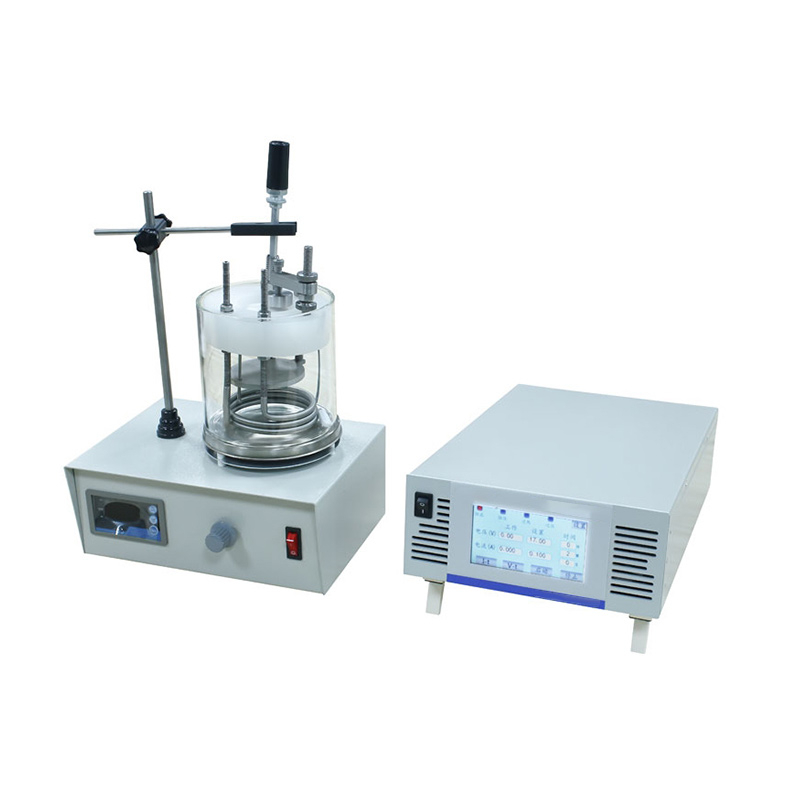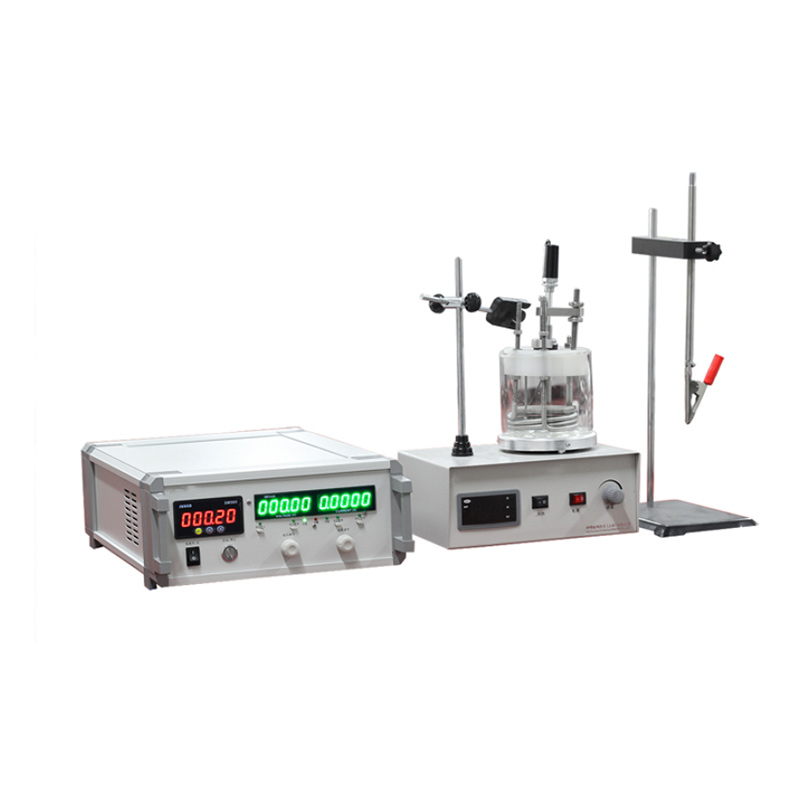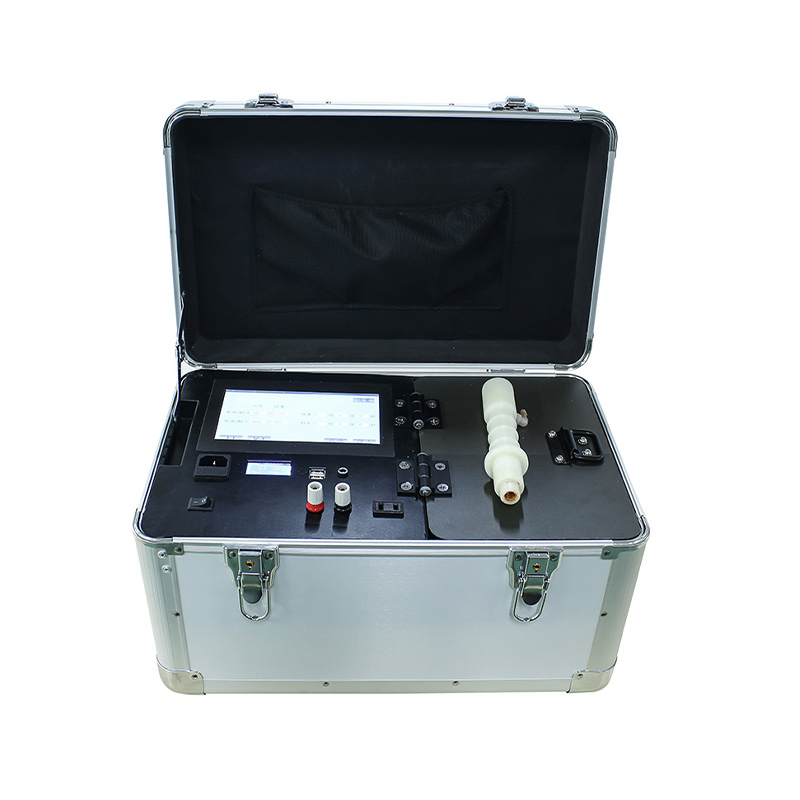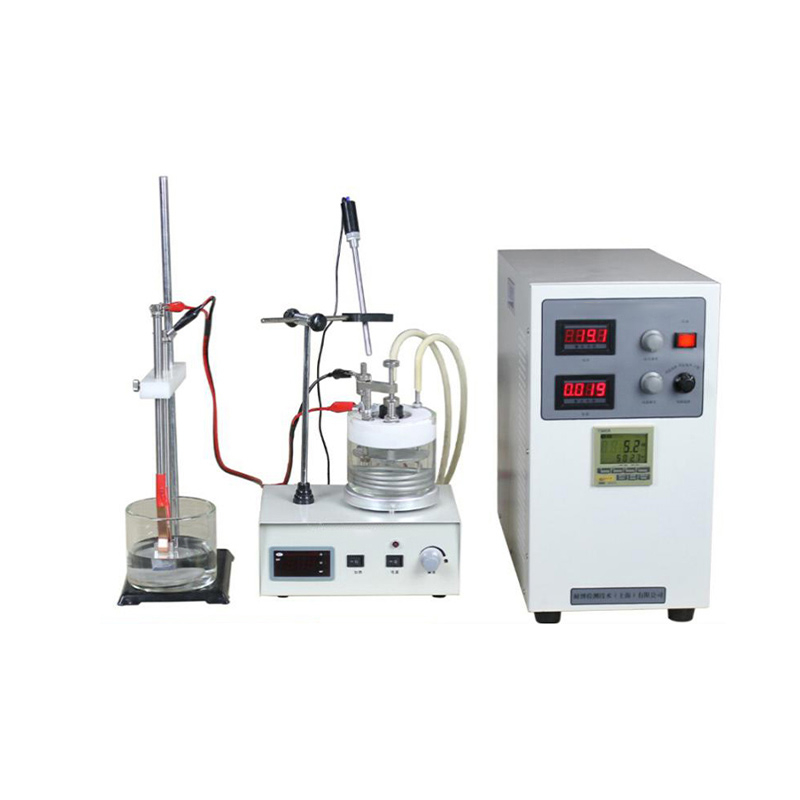CY-06X Electrolytic Polishing Instrument is a metallographic sample making instrument integrating electrolytic polishing and corrosion functions. It is suitable for use in factories, colleges and universities, scientific research institutions and other laboratories. The equipment utilizes electrochemical principles for metallographic sample preparation, can also be used for metallographic sample polishing, can also be used for metallographic sample corrosion, with fast sample preparation, good repeatability, no mechanical processing of the deformation layer and other advantages, is a non-ferrous metal, steel, especially stainless steel preparation of metallographic samples of the ideal equipment.
Product characteristics:
1. Touch screen to set parameters, display voltage time and current time curve;
2. Current and voltage scanning, automatic measurement of polarization curve: used to confirm the specific voltage and current of electrolysis or polishing. After generating the curve, it is used to get the best parameters suitable for corrosion and polishing of the material (optional)
Contact information:
If you are interested in our products, please contact us for more information and a quote.
Phone:+86 136 6380 8508
Email:jason@cysitech.com
Sales manger:Jason.Zhang
WhatsApp:+86 150 3827 2566
Wechat:cykytech
technical parameters:
Operating voltage | AC220V 50Hz |
Electrolytic output | Dc 0~100V / 0~6A, continuously adjustable, digital display |
Voltage and current regulation, display accuracy | Voltage 0.01V/ current 0.001A |
Constant temperature range | Room temperature ~ 100℃±1℃ |
Working hours | 0~99 hours, can be set by yourself |
Container capacity | 800ml |
Cooling system | Cooling coil, external tap water cooling |
Electric box size | 292×380×120mm |
Magnetic stirrer size | 240×190×130mm |
Gross power | 900W |
weight | 15Kg |
Application case:
Stainless steel sample handling
Experimental purpose
The surface of stainless steel samples is treated by electrolytic polishing instrument to remove surface scratches, oxide layer and other defects, and obtain a smooth, mirror-like surface for subsequent microstructure analysis or improvement of material surface properties.
Experimental equipment and materials:
Electrolytic polishing instrument 2. Stainless steel sample 3. Electrolyte (according to the stainless steel material to choose the appropriate formula, such as phosphoric acid + sulfuric acid + water mixed solution) 4. Dc power supply 5. Electrolyzer 6. Tweezers 7. Anhydrous ethanol 8. Hair dryer
Experimental procedure
Sample pretreatment
1. Use sandpaper to grind the surface of the stainless steel sample step by step. Start with coarse sandpaper (such as 200 mesh), and then replace with finer sandpaper (400 mesh, 800 mesh, 1200 mesh), each sandpaper should be polished 90° from the previous step to ensure that the scratches are evenly distributed and gradually refined until the scratch on the sample surface is difficult to detect by the naked eye. 2. The polished sample is ultrasonic cleaned in anhydrous ethanol for 5 minutes to remove the impurities attached to the surface, and then dry with a hair dryer.
Electrolytic polishing operation
1. According to the selected electrolyte formula, accurately configure the appropriate amount of electrolyte and pour it into the electrolytic cell to ensure that the depth of the electrolyte can completely immerse the sample surface to be polished. 2. Install the anode and cathode of the electrolytic polisher in the corresponding positions of the electrolyzer, and connect the DC power supply. Ensure that the connection line is stable and there is no risk of short circuit. 3. Use tweezers to pick up the pre-treated stainless steel sample, so that the surface to be polished is vertically immersed in the electrolyte, and the sample immersion depth is about 3 cm. The sample acts as the anode and is connected to the positive electrode of the DC power supply, and the cathode is connected to the negative electrode. 4. Start the DC power supply and slowly adjust the voltage to the preset value. Meanwhile, start the timer. In the process of electrolytic polishing, the surface changes of the sample are observed, and it will be found that the surface gradually becomes bright and a small number of bubbles are generated. 5. As the polishing progresses, adjust the voltage and time according to the surface condition of the sample. If it is found that there is local corrosion on the surface or the polishing effect is poor, the voltage can be slightly reduced or the polishing time can be shortened; If the surface is still not bright enough, the voltage can be appropriately increased or the time can be extended within the safe range. The general polishing time is controlled within 10 minutes.
Postprocessing
1. After reaching the predetermined polishing time, quickly turn off the DC power supply, remove the sample from the electrolyte with tweezers, and immediately soak it in anhydrous ethanol to terminate the electrolytic reaction and clean the residual electrolyte on the surface of the sample. 2. Ultrasonic cleaning of the sample in anhydrous ethanol for 3-5 minutes to further remove impurities and electrolyte traces that may remain on the surface. 3. Finally, dry the sample with a hair dryer to obtain the electrolytically polished stainless steel sample, whose surface should show a smooth, mirrle-like effect, which can be used for subsequent detection and analysis, such as metallographic microscope observation of microstructure, hardness testing, etc.
Matters needing attention
1. Harmful gases will be produced in the electrolytic polishing process, which should be operated in a well-ventilated environment, and a fume hood can be used if necessary. 2. The electrolyte is corrosive. Wear protective equipment such as protective gloves and goggles to prevent the electrolyte from touching your skin and eyes. In case of contact, rinse immediately with plenty of water and seek medical attention according to the situation. 3. The regulation of voltage and current should be carried out slowly to prevent the sample from overheating or other abnormal conditions caused by excessive current. 4. After the end of the experiment, clean the electrolytic cell and electrode in time, properly dispose of the electrolyte, and avoid environmental pollution.















